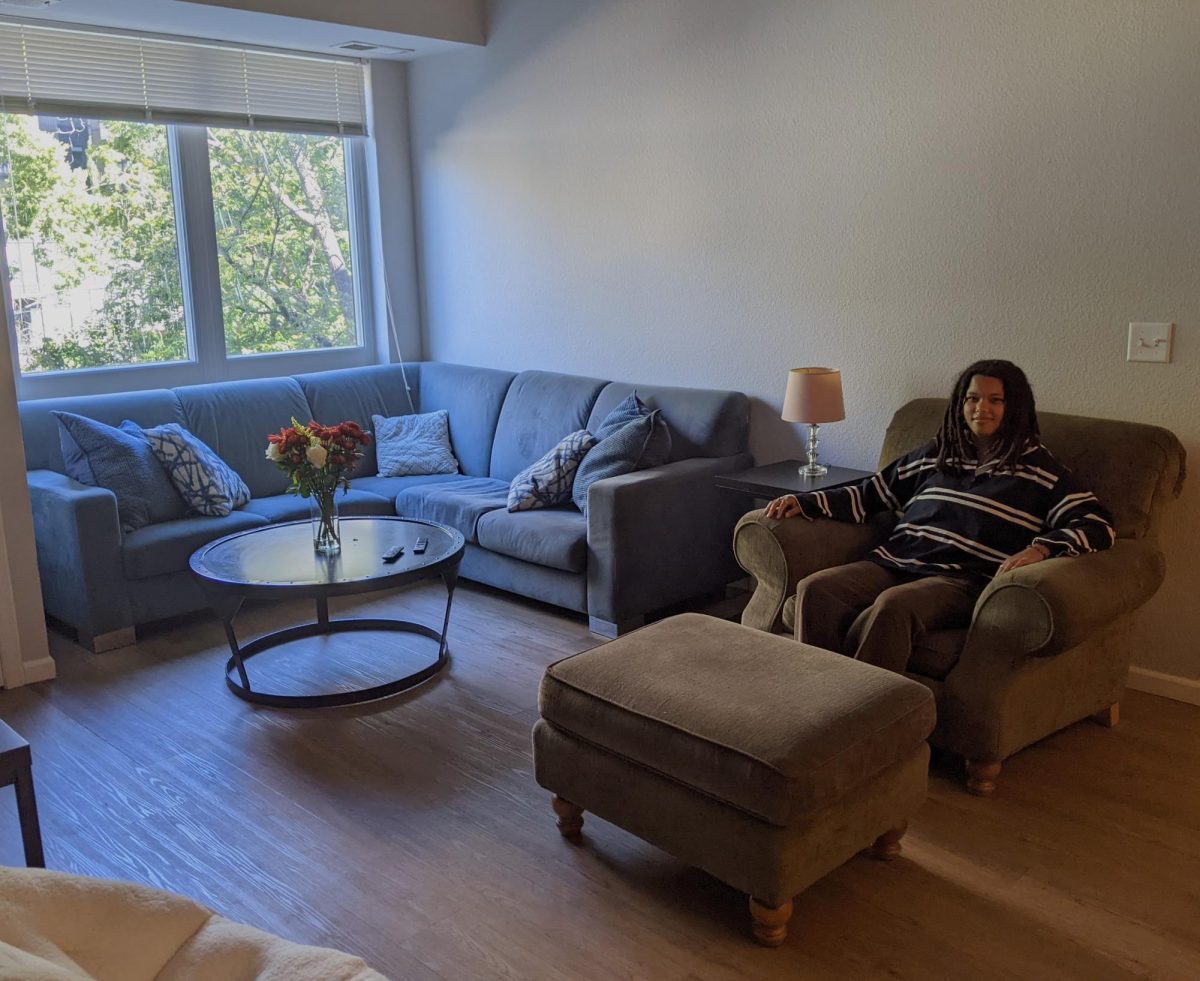For many students, college is their first time moving away from home — their first time inhabiting their own space.
These spaces, from dorms to apartments to duped-out houses, aren’t always what they expected them to be.
Ethan Andler, a first-year University of Minnesota student, originally wanted a triple room in Pioneer Hall with his two roommates, but they were given an “extended double” room in Comstock Hall instead.
“It’s essentially a double for three people,” Andler said. “I hated it. I thought, ‘You’re gonna get three grown dudes in here?’”
Still, before moving in, Andler made mock-ups of the room to brainstorm what he and his roommates could do with it. Even with a rattling window and having to walk back to his dorm from the communal showers in soaked shoes, Andler wanted to work with what they had.
“I want my place to be special, and what we have is special,” Andler said.
He added that the best part of their space is the sprawling view of the Mississippi River and the skyline of West Bank and downtown Minneapolis.

Andler described his and his roommates’ decorating style as minimalistic. Indeed, plain, dark gray bedding and a matching futon and curtains adorn their University-provided loft beds, with additions of a simple black leather cube footrest and a striped light gray rug.
But Andler said they accented the room with colorful lights.
In fact, each student I interviewed said they avoid using their “sterile,” “corporate” and “hospital” overhead lighting.
Ryan Olk, a second-year student, said he prioritizes function over form in his small, shared bedroom at the Sigma Phi Epsilon fraternity house but avoids using his overhead light like the plague.
“We have a couple of UMN flags and lights around, and there’s also natural light from this big window,” Olk said.
Olk, who joined SigEp as a freshman, said he enjoys the camaraderie of living with 40 other people but also the sense of independence that comes with living in a house compared to a dorm.
“You don’t have to rely on a dining hall or anything like that. Plus, my room has AC and wood floors,” Olk said.
Olk said the common spaces in the house came pre-decorated and that he and his fraternity brothers brought an “If it’s not broke, don’t fix it,” mentality to those spaces.
The real customization comes with individual rooms in the house, Olk said.
Given the small space he shares with his roommate, Olk said they use a desk to split the room in half, providing a good workspace.
When living with a roommate, Olk said communication is key.
“It’s their space, too, but feel free to speak your mind,” he said.
College living spaces are typically either small, cookie-cutter or both. What’s more, moving in and out of these spaces within a relatively short period of time is virtually guaranteed.
Still, students agree that intentionality with function and style is key.
Xaria Williams, a second-year student living in Radius Apartments, curated a tidy, minimalist yet stylish living room with her roommates. A comfortable blue sectional and warm green armchair circle a modern, circular coffee table adorned with a vase of fall flowers.
Of course, Williams and her roommates detest overhead lighting, too.
“We try to keep it homey with a lamp and LEDs,” Williams said. “We were very intentional with our space, but it took trial and error as well.”
Williams brought a similar aesthetic to her room, a cozy space lit primarily with the warm dimness of a floor lamp.
“It’s minimalist, but I also used a pop of color, florals with warm tones, and black and white prints on the walls,” she said. “The space was hard to work with initially because of the weird shape of the room. The bed would only fit well like this.”
Williams’ bed takes up the side of the room closest to the window. The pocket of space that’s left is inhabited by a small wooden desk, with pens and pencils and a wooden jewelry box with floral designs arranged on top.

Williams described Radius Apartments as “70% apartment, 30% dorm.” Like a dorm, floors on Radius are split into communities, and University advertising adorns the elevator. At the same time, the larger size of the apartment creates a less closely-knit community.
“I moved here because I liked the apartment style. There’s in-house laundry and a full-sized bed,” Williams said. “There’s less of a community here, but it’s better than other upperclassmen options.”
Instead of a monthly rent charge, the cost of living at Radius is included in tuition, similar to a dorm housing contract, providing a flat price rather than recurring out-of-pocket payments to worry about.
Living in multiple different places for only about a year each is chaotic, but these temporary spaces still serve as refuges after draining days of classes.
Students agree that decorating these spaces with intention is key because they’re the first taste of something truly their own.
“Really find what you want,” Olk said.














